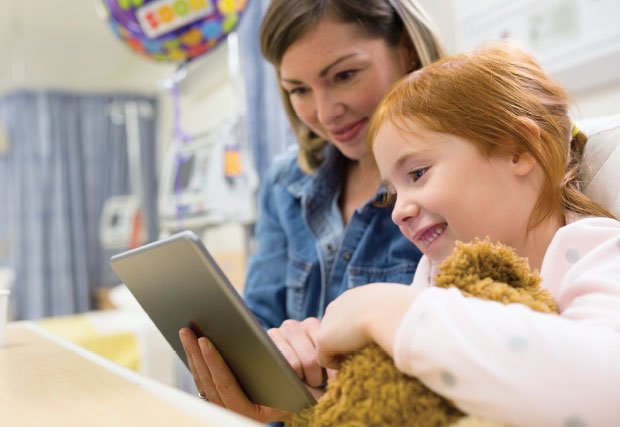![]() Deciding that your child needs to visit the emergency room (ER) can be a scary moment for both of you.
Deciding that your child needs to visit the emergency room (ER) can be a scary moment for both of you.
Certified Child Life Specialist Amber Landry, BS, CCLS, shares tips for parents who have to take a child to the hospital to make the experience easier for everyone.
 Talk to your child about the ER
Talk to your child about the ER
If this is your child’s first ER visit, they may ask, “What is the ER?” You could explain that the ER is a place open all day and night that people go to if they need quick attention when they get hurt or sick. Use developmentally appropriate language to explain things that your child may experience during his or her ER visit.
What to bring with you
If you have extra time before leaving the house, bring a comfort item like a blanket, stuffed animal or pacifier, depending on your child’s age. It can also help to bring activities like a book, toy or tablet to help ease anxiety while you wait with a fun distraction. If you weren’t able to grab personal items from home before you came to the ER, it may be a good idea to have someone bring those items for you if that’s a possibility.
Manage your emotions
Children of all ages can sense when their parent is feeling fear or anxiety. While you may be afraid or worried, try your best to stay calm and optimistic to help your child relax. Be open and honest about what is happening, but remain positive and comforting to put your child at ease. Focus on each task at hand to avoid feelings of anxiety that may surface.
If your child has to stay overnight
Your child may be admitted to the hospital if the doctors decide that additional medical attention is needed. Explain that staying overnight is like having a sleepover at the hospital. Each admitted child stays in a private room on one of our two pediatric units with a sleep chair for a parent or guardian to spend the night. Both pediatric units have a playroom and a nourishment room.
Summerlin Hospital has dedicated pediatric staff to serve your family including certified child life specialists, who are healthcare professionals trained to provide children with age-appropriate preparation for medical procedures, pain management and coping strategies to make the experience less stressful for patients and families.

